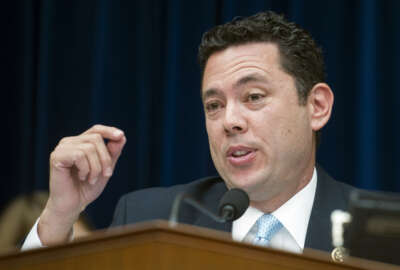
Your best date(s) to retire
Do you have an escape route from your job, the date you plan to retire? Senior Correspondent Mike Causey says you actually need two sets of numbers.
When deciding when to retire from the government, it is helpful to know two particular dates:
- The date when you will first be eligible to retire as well as the date or dates when retiring will give you the maximum annual leave payment and a tax break.
- The date of your death. While not a fun fact, it is good to know how long you will be retired so you can pace things like withdrawals from your TSP account. It is not unusual for people, especially federal workers, to be retired for at least as many years as they worked. Think about what a loaf of bread, a TV set, a house or car cost when you started working vs. what they are now — and what that price tag will be in 10, 20 or 30 years of retirement.
It is helpful to know the earliest date when you can retire and also to know how much more your final annuity will be — it’s roughly 2 percent per year (for CSRS, but for FERS, it’s a combination of the increase to FERS <1 percent or 1.1 percent> plus growth … or loss of TSP, and increase to SSA … if over 62) — for each additional year you work.
Retiring from the government beats retiring from most other places for a couple of reasons. First and foremost is the fact that many private employers don’t offer any retirement plan. Lots don’t offer employees a 401(k) plan option, and of those that do, very, very, very few give employees any matching contributions. Also, federal retirement benefits are linked to inflation. CSRS retirees get full cost-of-living adjustments regardless of what age they retire. FERS retirees don’t get COLAs (in most cases) until they are age 62. Then they are subject to diet COLAs if the annual inflation-adjustment is 2 percent or more (up to 2 percent the same as CSRS; 2 percent to 3 percent … FERS gets 2 percent and 3 percent or higher … FERS gets 1 percent less). Maybe add lifetime health benefits coverage with a huge government contribution to the cost?
FERS workers are eligible to get a total maximum contribution (from the government) to their Thrift Savings Plan account. Those who put in 5 percent or more get a 5 percent match from the government. That’s the equivalent of a tax-deferred 5 percent pay raise each year. Those who put in nothing still get a 1 percent match.
So back to dates. What’s the best one for you? The obvious answer: it depends. On when you are ready, when you can afford to retire, what you are planning next, when will you need to tap your TSP account: Right after retirement or 10 years later. Maybe you don’t want to touch it, but rather leave it to your spouse, kids or (just a thought) a needy federal columnist. Your call.
But some dates never change. There are advantages for some in retiring the last day of the month. Or at the end of a pay period. For many people, especially those who want to go out at the end of the year, or the beginning of the new year, either on Dec. 31 in some cases, or Jan. 1, 2 or 3 in others.
So how do you know? Tune in to our Your Turn radio show. Our solo guest is Tammy Flanagan — some would say the federal benefits expert. She also uncovered the “best dates” formula years ago. And she has updated it for 2016-17 for you. Just in case. That’s Feb. 17, from 10 a.m. to 11 a.m., right here on Federal News Radio or, in the D.C. area, on 1500 AM. Listen and tell a friend. It could be the financially smartest hour you ever spent.
Tammy is also doing a detailed slide-show webinar today for the National Active and Retired Federal Employees . It is free to NARFE members, and nonmembers can listen (and join NARFE at the same time) for more information if they click here.
Nearly Useless Factoid
Ten inches of snow covering an acre of land weighs approximately 226,000 pounds.
Source: Archimedes Notebook
Copyright © 2025 Federal News Network. All rights reserved. This website is not intended for users located within the European Economic Area.
Mike Causey is senior correspondent for Federal News Network and writes his daily Federal Report column on federal employees’ pay, benefits and retirement.
Follow @mcauseyWFED






